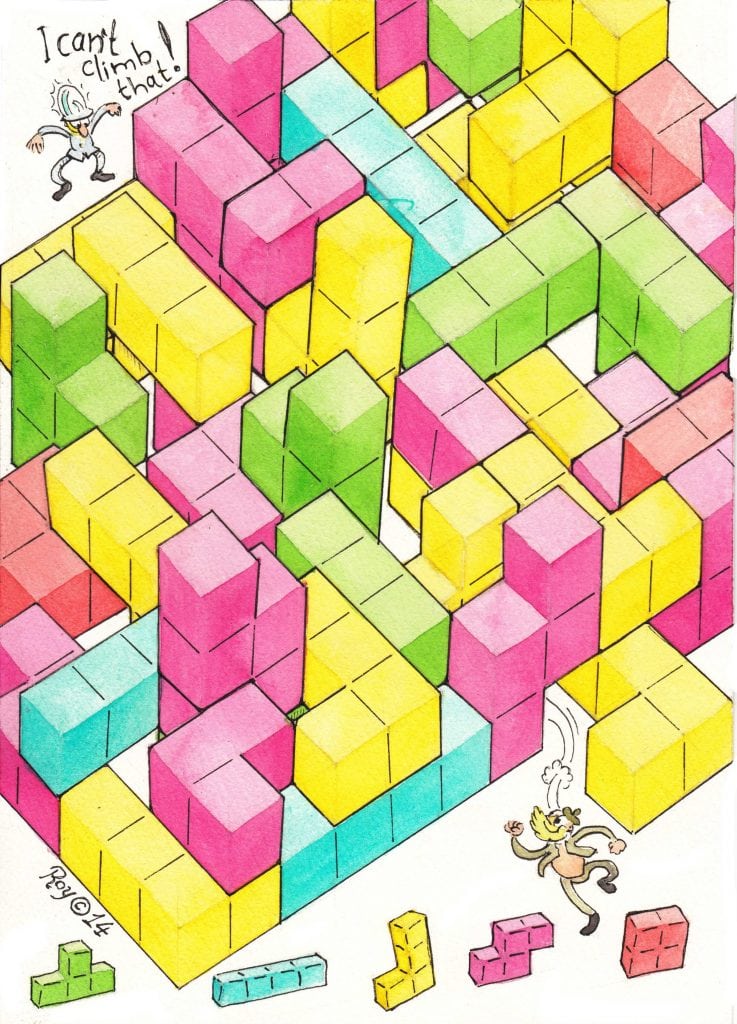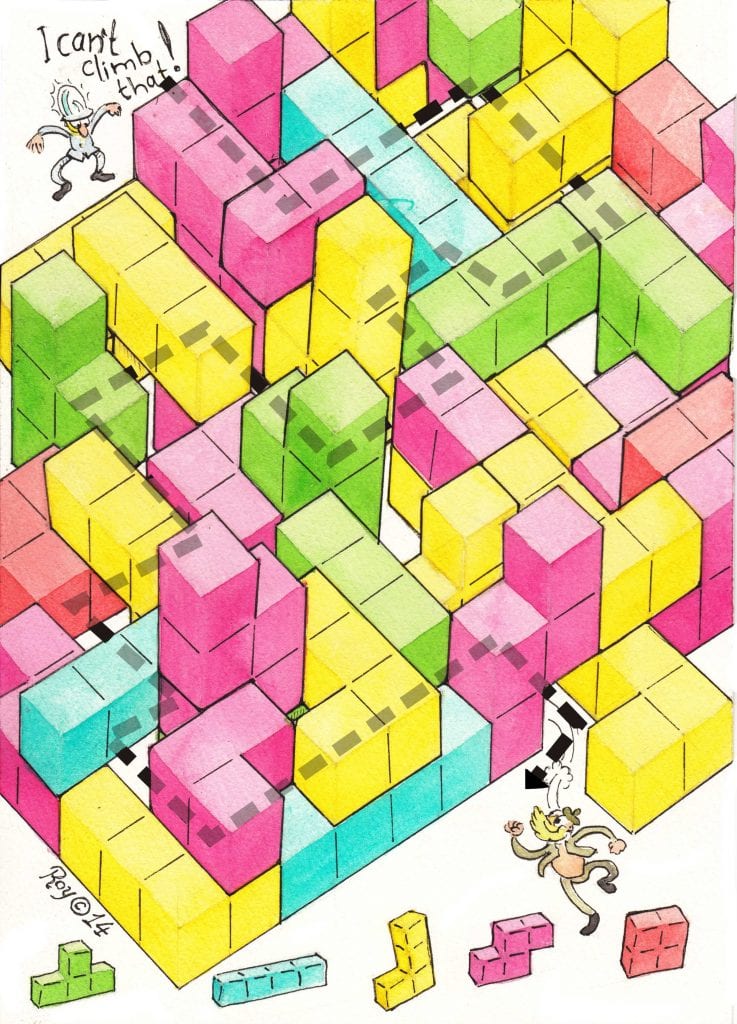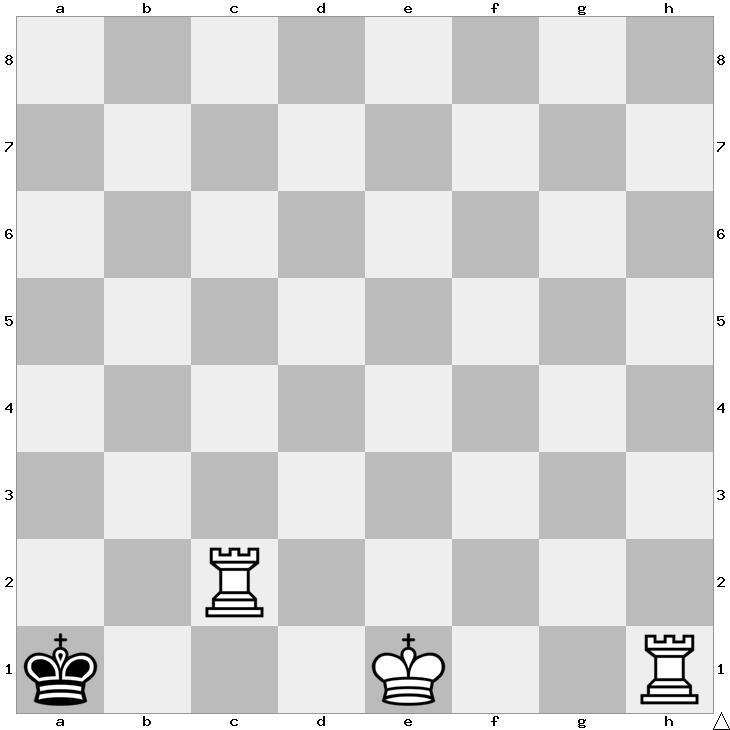Difficulty: Hard
Johann Sturcz is a Hungarian prolific artist, who creates a large variety of work, ranging from traditional paintings through modern art to children mazes.
Beat Strata
Strata is a beautiful award-winning game with mesmerizing sound and unique puzzle concept. It contains hundreds of levels with common rules and final goal. Below I present you these rules and ask you to find a universal algorithm, which will allow you to solve easily every single level of the game.
The rules are simple – you begin with an nxn board, some squares of which are colored in arbitrary colors. Then you start placing stripes of whatever color you choose over entire rows and columns of the board. Your task is after placing all available 2n stripes, the color of every (colored) square to match the color of the stripe which has been placed second over it (on top).
Can you find a simple algorithm, which results in solving any level of the game, no matter the starting position? You can watch AppSpy’s video below for better understanding of the rules.
The Rotating Square
On the table in front of you there is a square with 4 coins placed on its vertices. You are blindfolded and are given the task to turn all of the coins with either heads up or tails up. Every time you turn few of the coins however, the square rotates arbitrarily on the table. Find a strategy, such that no matter the starting arrangement of the coins and no matter how the square rotates after every flip of coins, eventually you will turn all of the coins with the same face up.
Students with Hats
Professor Vivek decided to test three of his students, Frank, Gary and Henry. The teacher took three hats, wrote on each hat a positive integer, and put the hats on the heads of the students. Each student could see the numbers written on the hats of the other two students but not the number written on his own hat.
The teacher said that one of the numbers is sum of the other two and started asking the students:
— Frank, do you know the number on your hat?
— No, I don’t.
— Gary, do you know the number on your hat?
— No, I don’t.
— Henry, do you know the number on your hat?
— Yes, my number is 5.
What were the numbers which the teacher wrote on the hats?
Strips in the Plane
Prove that you can not cover the plane with infinite strips which have
Shuffling Cards
52 cards – 2 of clubs to Ace of clubs, 2 of diamonds to Ace of diamonds, 2 of hearts to Ace of hearts, and 2 of spades to Ace of spades – are arranged in a deck. We shuffle them in the following manner:
- We take the top card and put in a random place inside the deck.
- Once we get to the King of spades and put it somewhere in the deck, we stop.
Show that this method shuffles the deck uniformly, i.e. every permutation has the same chance to appear.
Integers on a Chess Board
You are given an 8×8 chess-board, and in each of its cells
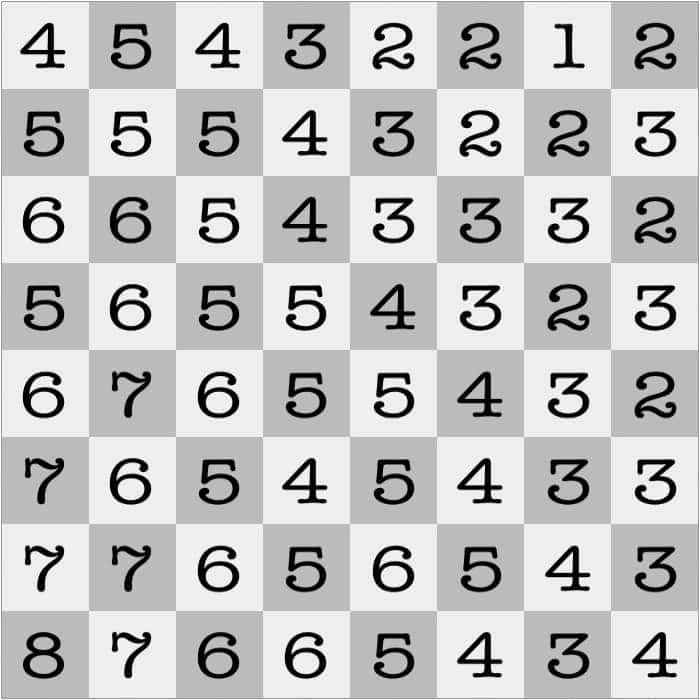
Game of Chess
Ned and Jon are playing chess. Eventually, they end up in a position in which Ned (whites) is left with 2 rooks, and Jon (blacks) has just his king on the board. If Ned can mate Jon in exactly 4 different ways, what is the position of the pieces?
Lost Boarding Pass
There are 100 passengers which are trying to get on a plane. The first passenger, however, has lost his boarding pass, so decides to sit on an arbitrary seat. Each successive passenger either sits on his own seat if it is empty or on an arbitrary other if it is taken. What is the chance that the last person will sit
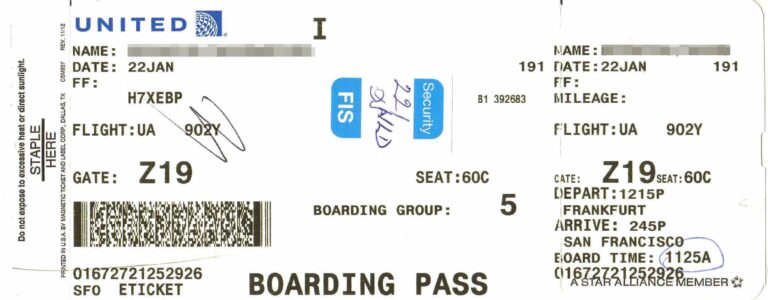
Impossible!
Is it possible the following chess position to occur in a game?




